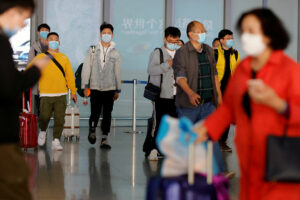By Justine Irish D. Tabile, Reporter
SHANGHAI — Visa-free entry is driving the growth of inbound travel to the Asia-Pacific (APAC) region, according to Singapore travel booking service Trip.com Group.
At the Airline Global Conference 2024 at the Pudong Shangri-La, Trip.com Chief Operating Officer Schubert Lou said visa-free policies are yielding results within the region.
In particular, he said that visa-free policy announcements, which started in Malaysia last year, are now becoming a trend in the region and are triggering the growth of travel to and from the region.
“More and more countries are getting into that, and Indonesia is the next in the line,” Mr. Lou said, adding that Singapore and Thailand have already joined the trend.
“And that has triggered tremendous growth. One example of that is the China outbound market. What that has created is what we call the ‘just pack your bag and go’ era of China outbound,” he added.
He said that since some countries went visa-free, China outbound travel increased 20% as of May 1, outpacing pre-pandemic levels, while the Southeast Asia outbound market exceeded pre-pandemic levels by 60%.
“What we are seeing is a tremendous momentum of people wanting to go (out)… and convenience matters,” he added.
He said the region was the “engine of growth” for global air passenger demand in the first quarter, partly driven by the visa-free policies.
Demand was also stoked by promotions offered by tourism boards and governments, the recovery in flight capacity, and weak currencies in the destination countries, he added.
Citing the International Air Transport Association (IATA), Mr. Lou said that average international demand growth in the region grew 45% in the first quarter, outpacing average international demand growth of 16%.
However, IATA Head of Project and Innovation Stephan Copart said that a survey last year showed that passengers still cite pre-flight procedures and immigration as pain points when traveling.
“Pre-flight and immigration processes, including visa requirements, are still very big pain points,” Mr. Copart said.
The survey showed that 36% of the respondents were discouraged from traveling due to immigration requirements, while 49% said that they consider the complexity of the process as a main deterrent to traveling.
He said that this is why programs such as the visa waiver on Trip.com have positively impacted demand for spontaneous trips.
“Passengers are really asking for a better way to manage those immigration and visa requirements. And that’s where data becomes a key element,” he added.
He said that passengers are now more inclined to share data to facilitate their trip and speed up the process.
“87% are willing to share immigration information before departure to speed up the arrival process. This has been a constant increase over the past few years. Two out of three prefer online applications ahead of traveling to obtain the visa,” he added.
In the Philippines, inbound travel by tourists from China has yet to recover to pre-pandemic levels. China was the country’s second-largest source of international visitors in 2019. China ranked fifth among source markets for international arrivals last year.
South Korea remained the Philippines’ top source of international visitors last year, accounting for 26.4% of foreign arrivals, or 1.44 million, while tourist arrivals from China made up 4.8% or 263,863.
In the first quarter, China was the third-largest source market for the Philippines, accounting for 130,574 or 6.49% of visitor arrivals.
